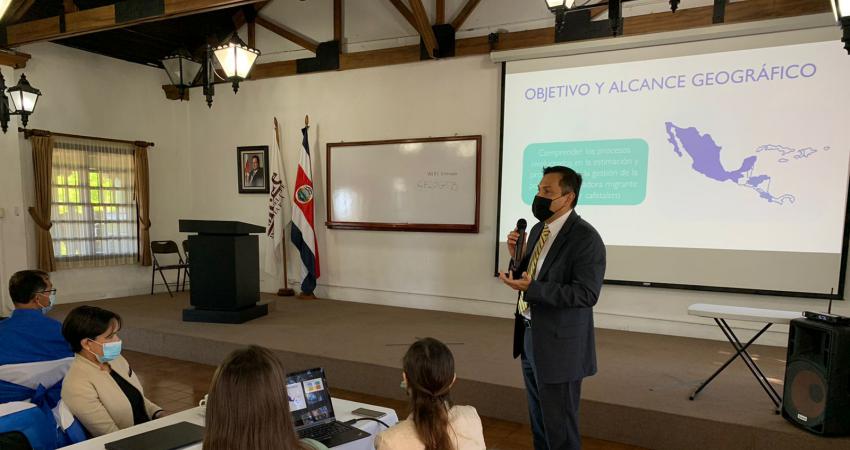Key government officials from five countries participated in a regional exchange on the implementation of bilateral labour migration programs

Over 35 government officials from Mexico, El Salvador, Guatemala, Honduras, the Dominican Republic and Costa Rica, representing the ministries of foreign affairs, labour, health, agriculture and migration institutes, successfully concluded a four-day experience exchange on labour migration programs. The participants learned about the success factors and practical application of Costa Rica’s bilateral agreements for temporary labour migration in the agricultural sector (“SITLAM” at the southern border of Costa Rica and “Co-desarrollo” at the northern border).
The IOM study “Mechanisms for Labour Migration in Mesoamerica” shows that most existing such mechanisms support temporary labour schemes and 45% support the primary sector of the economy. However, a major challenge is the development of mechanisms that respond to changing labour market trends and private sector needs in a flexible manner, whilst also ensuring the protection of migrant workers.

Therefore, the regional exchange aimed to strengthen government capacities to design and implement such mechanisms to manage labour migration in a humane, orderly and safe manner, showcasing Costa Rica’s bilateral mechanism as a best practice.
This program was constructed jointly by the Costa Rican government and the coffee industry to respond to a labour shortage during the coffee harvest, in the context of COVID-19. In the past year, over 13,000 Nicaraguan and Panamanian workers have found temporary work through the mechanism. One of the key elements of the programs is the development of a labour migration traceability system (“SITLAM”) to match migrant workers with agricultural businesses. Thus, the system has also been crucial to ensure the health protection of migrants and employers during the pandemic.

The exchange comprised several activities, including field visits to coffee farms and two points of entry, one in the north with Nicaragua and one in the south with Panama, where the participants saw how the bilateral labour migration program is implemented at the borders. It also included a session in which national delegations shared progress and challenges in the implementation of their main labour migration programs.
“This exchange of experiences can help us generate a regional exchange that could ultimately lead to joint migration systems, which would allow us a greater inclusion of the migrant population in the productive processes and also in the political processes of the region”, said Diego Camacho Aquiahuatl, Mexican Secretary for Labour and Social Prevision. “The Costa Rican experience shows that technology is not only an element that imposes and determines social processes, but one that reinforces and consolidates them“.
IOM’s support for this experience exchange was delivered under the Western Hemisphere Program, funded by the U.S. Department of State Bureau of Population, Refugees and Migration. Read the study: https://programamesoamerica.iom.int/sites/default/files/mechanisms_for_labour_migration_in_mesoamerica.pdf